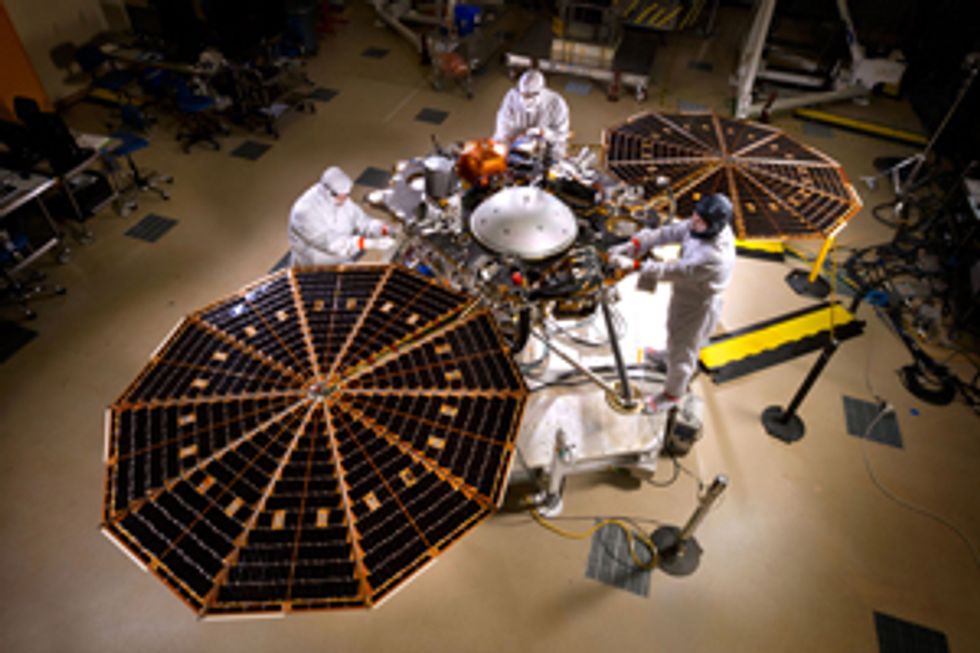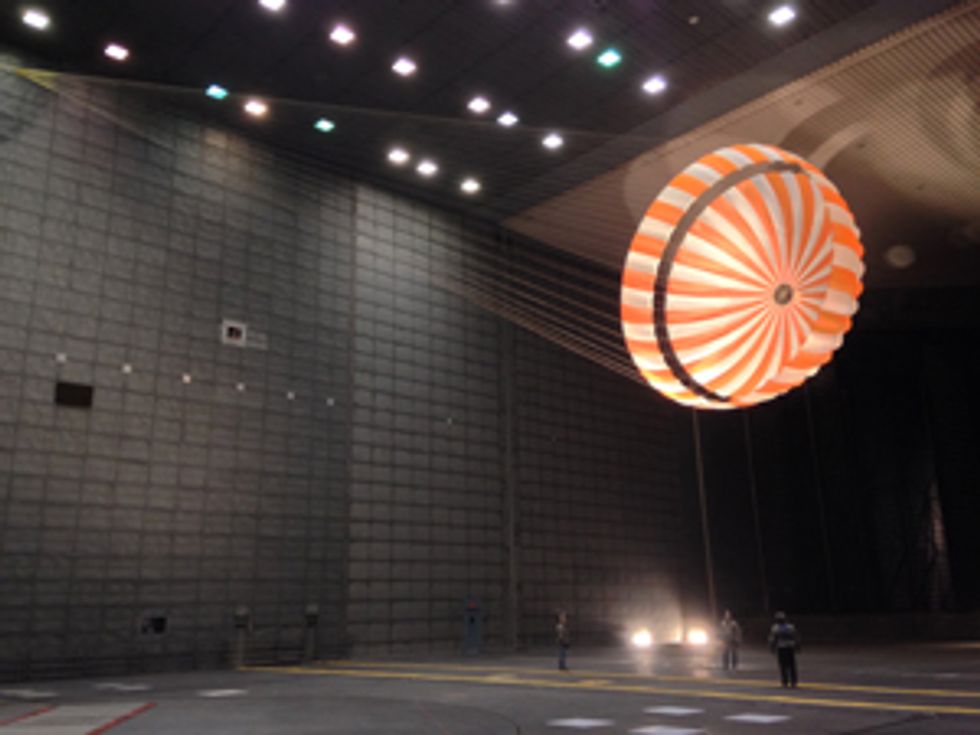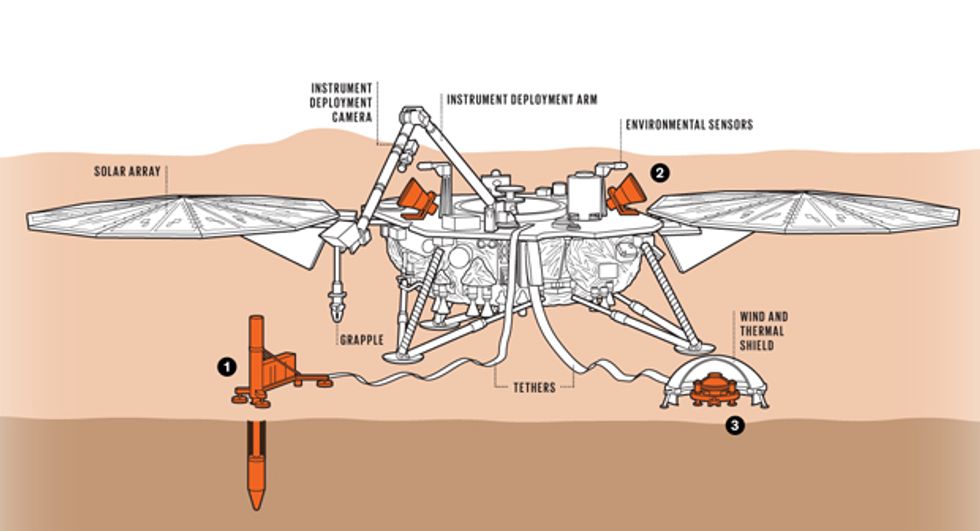Armada of Martian Probes Will Study the Planet, Inside and Out
Five intrepid spacecraft will make their way to the Red Planet in 2016
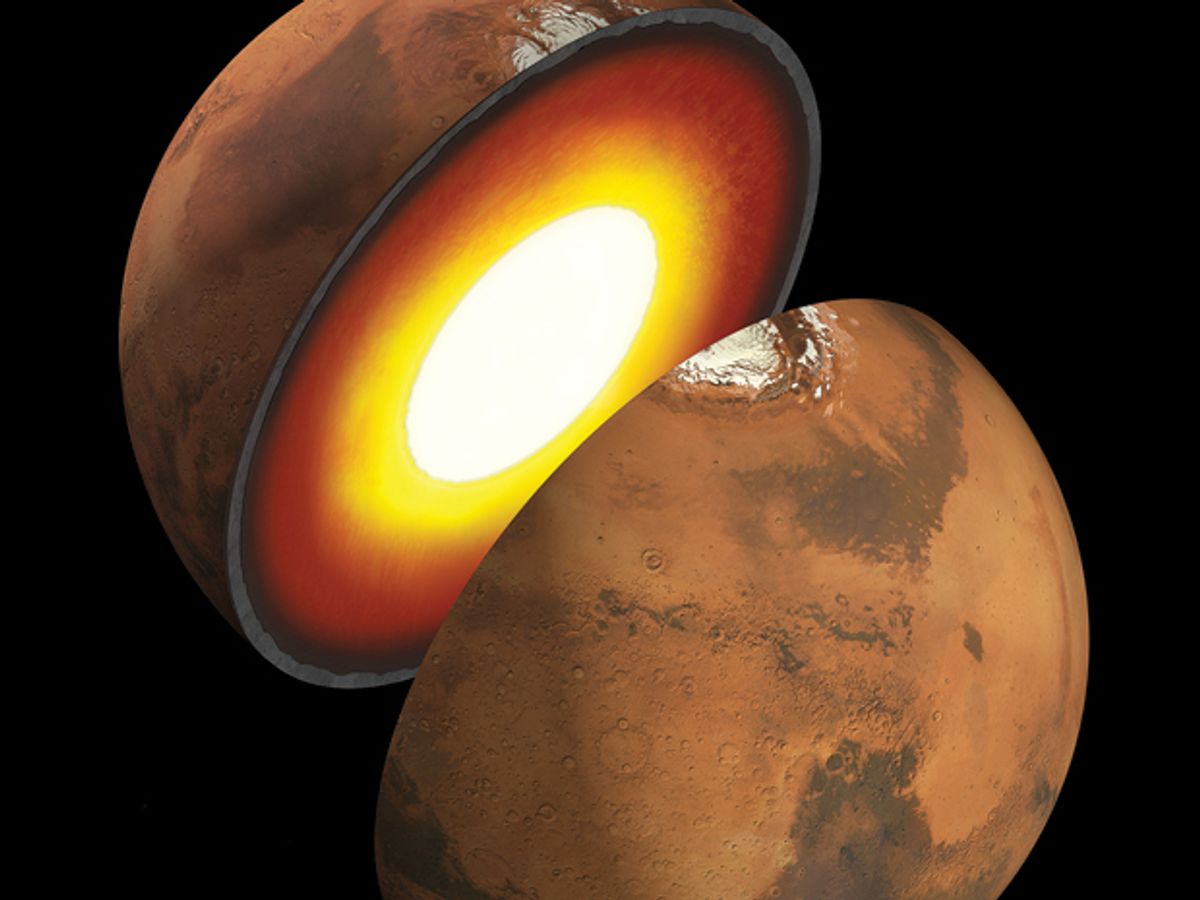
Update 22 December 2015: NASA has announced that it is canceling the March launch of InSight after determining that there isn't enough time to fix and thoroughly test the vacuum seal on the spacecraft's seismological instrument. The next favorable launch window for such a mission would be in 2018.
When the twin Viking landerstouched down on Mars in 1976, each carried a seismometer. But the sensors turned up little in the way of planetary vibrations. One seismometer failed to deploy properly; the other, mounted like its counterpart on the lander’s deck, picked up mostly wind.
Forty years later, the seismic study of Mars is poised for a second act with NASA’s InSight lander. AsIEEE Spectrum went to press, the InSight team was still working to resolve a problem with the spacecraft’s seismometer package but aimed to keep to a scheduled March launch from Vandenberg Air Force Base, in California. If all goes as planned, the spacecraft will reach the Martian surface in September, where it will use seismometers to listen for quakes created as the planet slowly cools and contracts, vibrations rippling out from colliding meteoroids, and other sources of motion. Researchers hope to use the sound waves to build a picture of the interior of the planet, much as signals generated in a sonogram are used to image the body.
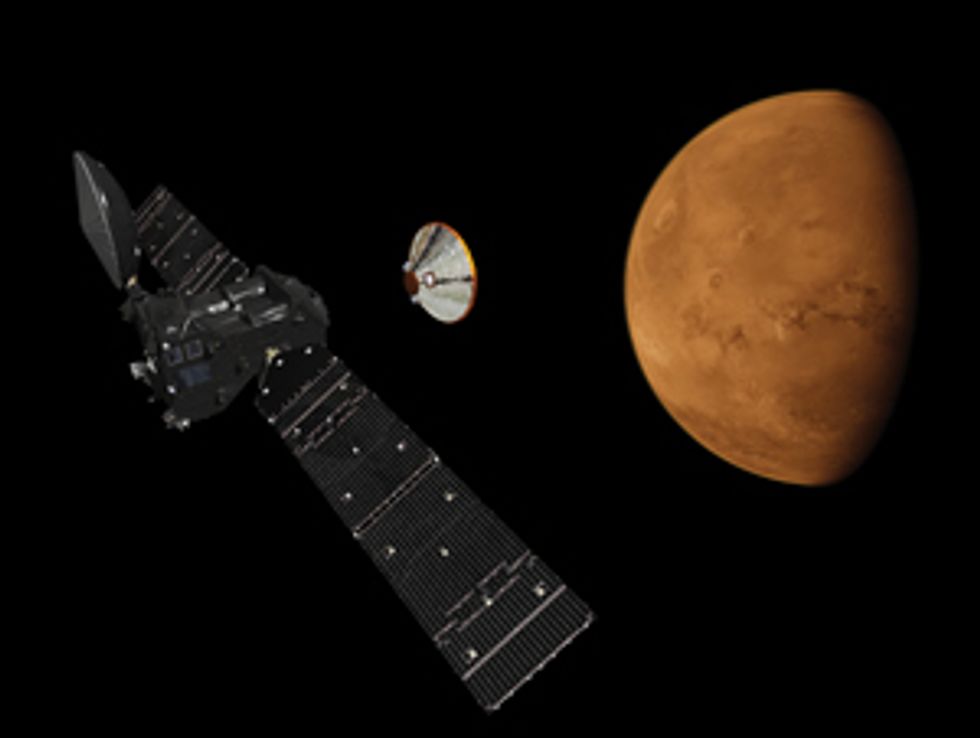
To save effort and cost, InSight copies many features of NASA’s solar-powered Phoenix lander, which reached Mars in 2008. The spacecraft, which is being built by U.S. contractor Lockheed Martin, has a strong international component. France, Germany, and other countries contributed roughly
US $100 million in the form of scientific experiments, says Bruce Banerdt, a planetary geologist at NASA’s Jet Propulsion Laboratory, in Pasadena, Calif., and InSight’s principal investigator. The U.S. portion, capped at $425 million in 2010 dollars, covers the cost of the spacecraft and two years of operation on the Martian surface (the launch is extra).
The French space agency, CNES, led the development of InSight’s seismometers, with contributions from institutions in several countries. The instrument is 1,000 times as sensitive as those carried by the Viking landers—even more at some frequency ranges, says payload leader Philippe Lognonné of the Institut de Physique du Globe de Paris. At the same time, the sensor is built to be rugged enough to withstand the wide swings in Mars surface temperatures for at least two Earth years.
After landing, InSight will use its robotic arm to remove the instrument from the deck of the spacecraft and set it on the ground. An aluminum dome will then be placed on top to reduce the effect of wind and temperature swings on the data it collects. The arm will also deploy a heat probe, provided by the German Aerospace Center, to measure heat loss from the interior of the planet. InSight will track temperatures as an electromechanical hammer knocks the probe down a millimeter or so at a time to an ultimate depth of as much as 5 meters. The process, which will pause periodically to take measurements, is expected to take several weeks. A third experiment will remain on the spacecraft and measure variations in radio signals sent between the spacecraft and Earth to track the slow wobble of the planet’s rotational axis, which is influenced by its internal structure.
Inside Mars
InSight copies many features of NASA’s 2008 Phoenix lander, including a robotic arm that will be used to place instruments on the Martian surface.
1. HP3 The Heat Flow and Physical Properties Package, provided by the German Aerospace Center, will be used to investigate how heat is lost from the planet’s interior. The instrument will burrow as much as 5 meters below the surface, stopping periodically to take measurements. The tether it trails behind also contains temperature sensors along its length.
2. RISE The Rotation and Interior Structure Experiment, led by NASA’s Jet Propulsion Laboratory, will use InSight’s X-band radio equipment to send signals to Earth. The shifts in these radio signals will be used to pinpoint—within a matter of centimeters—the lander’s position, which will be used to track changes in the rotational axis of the planet.
3. SEIS InSight’s Seismic Experiment for Interior Structure, provided by the French space agency, contains multiple seismometers made with either pendulum-and-spring sensors or microelectromechanical devices. The package includes an evacuated sphere, which will be placed on the ground and covered with a shield to minimize the signals created by passing winds and temperature swings.
Modern seismic studies of Earth’s interior rely on many distributed sensors. Researchers initially thought that a proper study of the Martian interior would also require a network of sensors scattered around the planet, Banerdt says. But he and his colleagues eventually concluded that with modern signal analysis techniques, they should be able to extract meaningful information about the planet’s interior using seismometers installed at a single site—a much cheaper prospect.
The trick, Banerdt says, comes from the fact that a single quake creates multiple signals that wrap both ways around the planet. The arrival times of these signals can be used to deduce the location of the source of the vibrations and the speed at which they move. Such information will help planetary geologists improve estimates of the thickness of the planet’s crust and the composition of its mantle. The measurements made with the spacecraft’s radio experiment, which will add to a body of data collected by previous Martian landers, will refine the picture of the planet’s core.
InSight’s results, Banerdt says, will not only illuminate the internal structure of Mars but also help scientists understand how rocky planets in general form and change over the first tens of millions of years of their lives. “We actually proposed this not as a Mars mission but as a solar system mission,” Banerdt says. “We’re trying to understand how planets are built [and] why Venus, Earth, and Mars are so different.”
Comparative Planetology
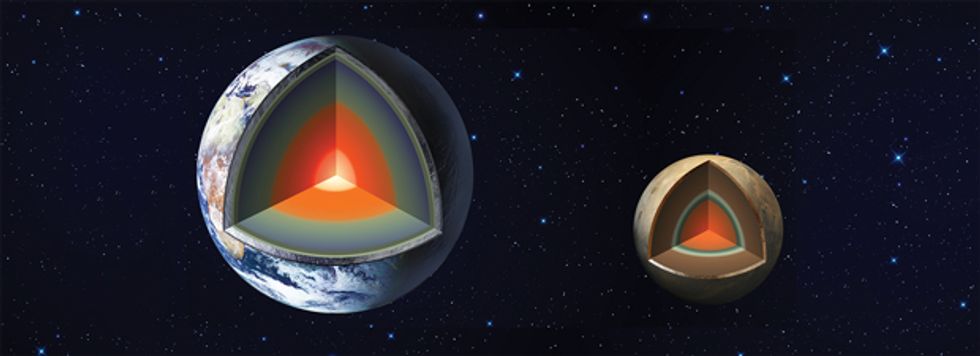
Earth has moving plates, which raise mountains and create new oceans. Mars is awfully quiet by comparison. The quakes that planetary scientists expect to see on the Red Planet are created by slow contraction and the press of heavy formations on the surface, explains Véronique Dehant of the Royal Observatory of Belgium.
The differences between the two planets go deep. Iron circulating in Earth’s liquid core creates a global magnetic field, which protects the atmosphere. Mars seems to have once had such a field, too, but it disappeared billions of years ago.
Although that field was lost, data collected on how Mars stretches due to the tidal tug of the sun, along with the way it spins, suggest the planet’s core remains at least partly liquid. At some point in its history, Dehant says, the Martian core became too cool to drive circulation through convection; it is now thought to be losing heat through the less efficient process of conduction. “[The liquid state of the core] still needs to be verified,” says Dehant, a coinvestigator on InSight’s radio-frequency experiment RISE. InSight should be able to reduce uncertainty in the core’s diameter by a factor of 10, she adds, which will help pin down its properties. —R.C.
Mars, he says, is a good window on the early solar system. The planet is an almost Earth—smaller than our own planet yet large enough to have experienced similar temperatures and pressures as Earth did when it formed about 4.5 billion years ago. But while geological processes have erased much of the evidence of what Earth looked like early on, Mars has remained largely inactive, so its early state has been preserved.
Matter of Fact
As many as 12 Mars spacecraft could be in operation during 2016.
InSight is one of five spacecraft that could reach the Red Planet in 2016. InSight’s rocket will also carry a pair of CubeSats, for a mission dubbed Mars Cube One, which will assist in relaying signals during InSight’s entry, descent, and landing. The two spacecraft, more or less briefcase-size when stowed, will be the first CubeSats sent beyond Earth orbit.
Also aiming for a March launch is the first of two ExoMars missions by the European Space Agency and Russia. It will send the Trace Gas Orbiter to hunt for the spectral signatures of gases in the Martian atmosphere such as methane, which could have a biological or geological source. The mission will also carry Schiaparelli, a spacecraft designed to test landing technology. It would pave the way for the ExoMars rover, targeted for launch in 2018.
This article originally appeared in print as “Studying Mars, Inside and Out.”
